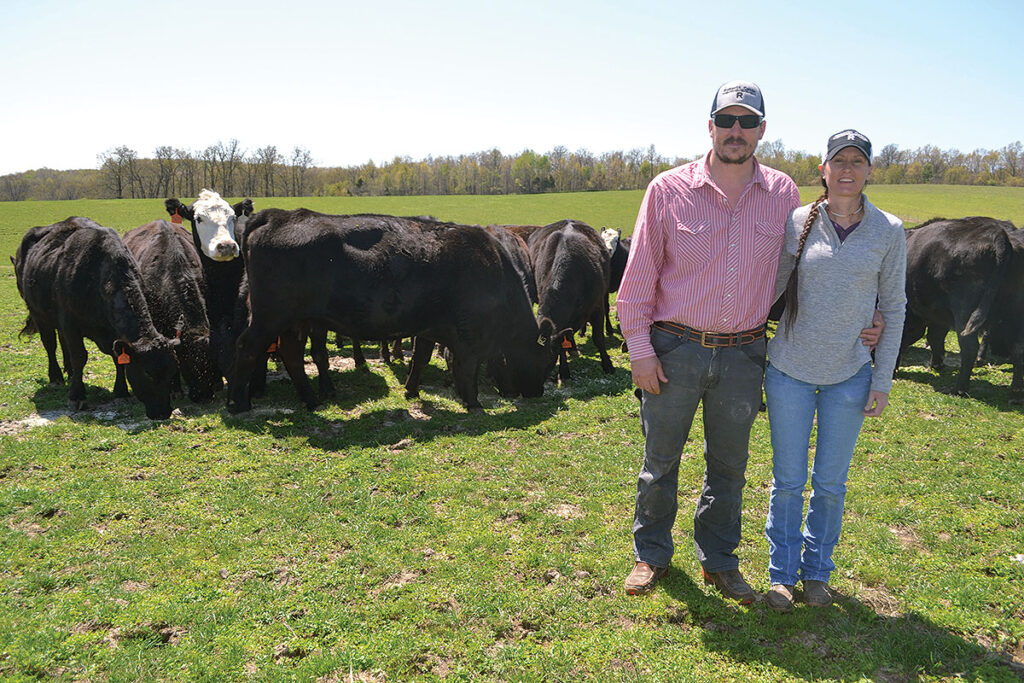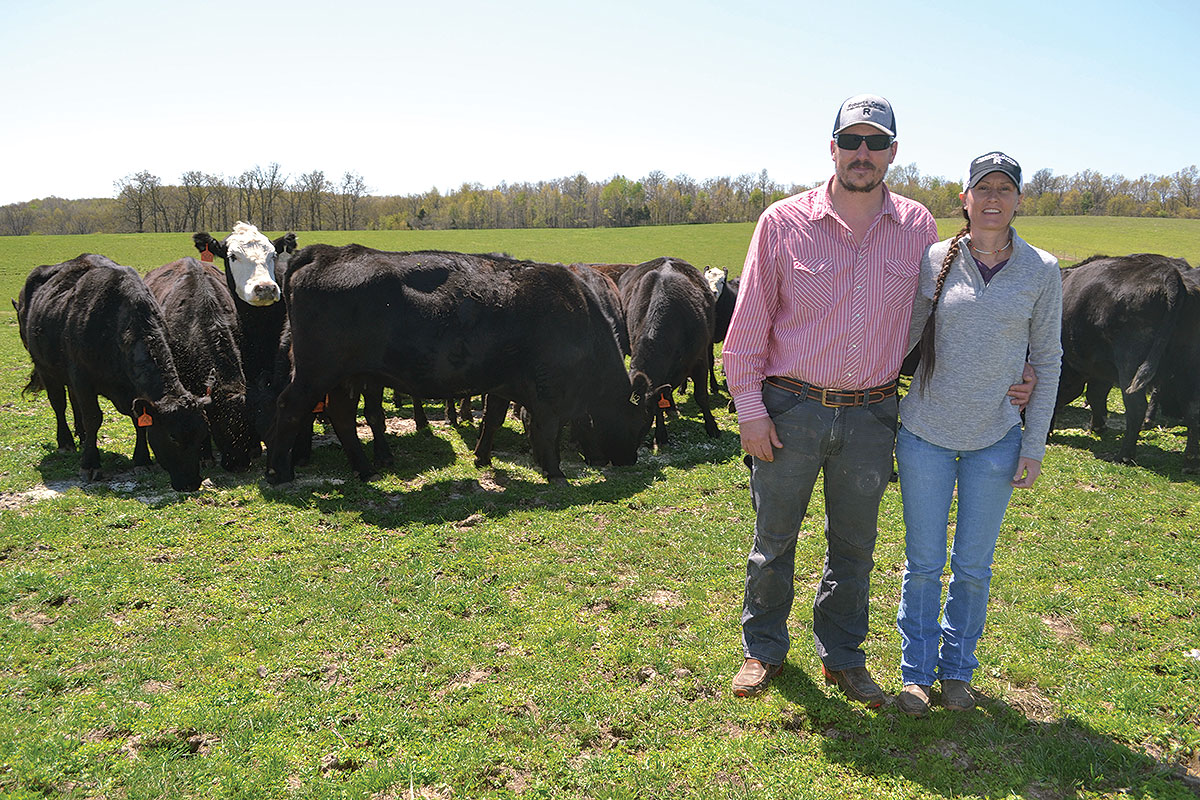
The Roberts family reduces total head count to improve manageability
Jake and Melissa Roberts farm 200 acres in far eastern rural Laclede County, Mo., where they run a 140- to 150-head commercial cow/falf pairs, and a few stocker calves.
“We use registered Angus bulls, but we run a strictly commercial operation,” Jake explained. “We’ve been here now for nine years but not so long ago, we were up to 700 head at one point, across two counties. We were renting a couple of farms, developing AI heifers, doing the hard work, up all-night delivering calves. We were growing 3,000 yearlings for Joplin Regional Stockyards.”
Shortly before the pandemic, however, Jake suffered a serious four-wheeler accident, including a broken back. That injury, along with this past year of COVID brought the Roberts to a point where they had to scale back. Finding and keeping reliable farm help has also been increasingly difficult throughout this pandemic year. Jake returned, for a time, to a grain-hauling truck operation but was not happy with the time he was spending on the road, away from Melissa, their 14-year-old daughter Taylor and 12 year old son Trevor.
“The market dropped so hard and fast last year,” he said of the cattle markets in 2020. “We took an 85 percent hit, but we just had to find a way to scale back to what we could handle ourselves. Melissa is more of a cattle person than I am probably, having grown up on a Nebraska ranch. Our kids are home-schooled, as far out as we live in the country, and they also help in our work on the farm. I think that really helps them as they grow and develop into young adults with a real sense of responsibility and respect.
“This past spring, Melissa and the kids did all the work, calving, feeding and raising of the calves. We keep up on the vaccines, to keep a healthy herd, including a closed herd. We haven’t bought any cows in the past eight or nine years since we started here.”
The Roberts raise their calves to 800 pounds. They then send the majority of them a Kansas feedlot, but maintain ownership all the way to the packing house. In that way, they are able to sustain a better value for their animals and they find their operation to be more profitable in the long run.
They purcahse most of their hay and feed what they call “gin rash feed,” a cotton byproduct, wet distiller and homoney.
“We feed the dame tot he calves, but witha little more hominy.”
They keep some animals back for their meat processing operation and sell those as whole, halves or quarters.”
Melissa also recently added meat sheep to their farm.
“I have Katahdin and Dorper sheep and some mixed. They started as a hobby but my little flock keeps growing. I have 47 ewes at the moment.”
The family hopes to expand the flock to provide breeding stock, as well as venture in to the meat markets.
Currenly, rams are ran with the flock at all times, and ewes lamb twice a year. In addtion to grass, the flock is given a quality alfalfa hay.
For the Roberts family ranching is a way of life.
“I graduated high school in Colorado and was rodeoing in high school,” Jake “I always loved horses, cattle and animals in general. Melissa grew up, ranching in Nebraska and she can do anything on this place. We met in college in Colorado and then moved to Oklahoma, where we were breeding heifers, then in Kansas before coming to Missouri. We were buying hay from folks in Southwest Missouri when we were invited here by another producer to see his place. I asked him on the spot about renting his farm once we saw it and we moved to the Ozarks. I guess you’d have to say it was the drought that brought us here as much as anything else. I was just tired of seeing so much dry. I wanted to live somewhere green where I could see it rain sometimes.”







